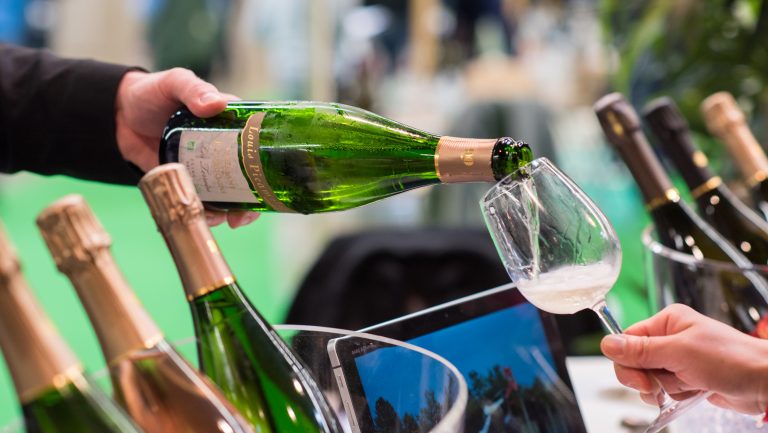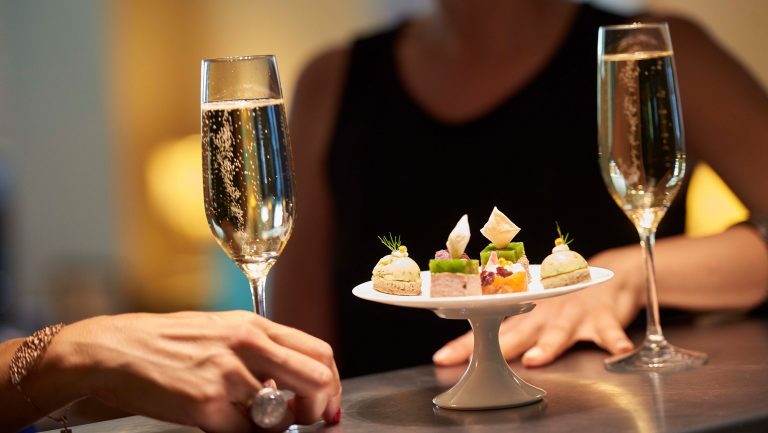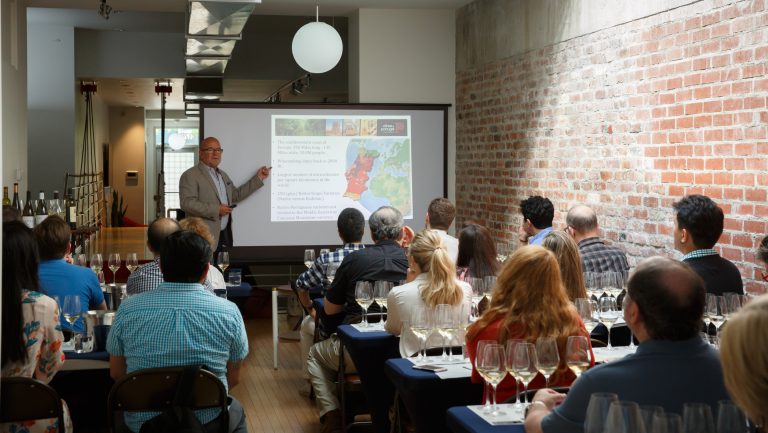This advertising content was produced in collaboration with our partner, Bourgogne.
Consumption of sparkling wines is on the rise, especially among new drinkers and younger generations, making this a category with enormous sales potential. High-quality and sophisticated French bubbly, such as Crémant de Bourgogne, is particularly attractive to consumers thanks to its origination from some of the most talented growers and esteemed terroirs in the world.
The latest Wine Intelligence research shows that between 2019 and 2022, sparkling wine consumption increased by 30 percent in the United States. As more people buy and share bubbly, they’re seeking out new options, eager to learn more about new categories. Crémant de Bourgogne, crafted with the same vinification technique as Champagne but sourced from Bourgogne, offers that sense of discovery for some and is especially appealing to younger drinkers as they first engage with wine.
This boost will be felt in coming years, as the same data suggest that by 2026 the sparkling wine market in the U.S. will grow by an additional 15 percent. “Flatiron Wines has a full table of sparkling wines under $40,” says Clara Dalzell, the former general manager of Flatiron Wines in New York City and now an independent wine consultant. “People would even spend more, especially if they were getting a little bit more, and I think Crémant de Bourgogne can be an incredible value.”

Don’t miss the latest drinks industry news and insights. Sign up for our award-winning newsletters and get insider intel, resources, and trends delivered to your inbox every week.
Special occasions aren’t necessarily the key driver for increased demand for Crémant de Bourgogne and other bubblies. Sparkling wines are also increasingly enjoyed in more casual settings such as brunch, as an apéro with snacks, instead of a cocktail, or poured with weeknight meals at home. Crémant de Bourgogne wines are an ideal option for everyday moments, says Cara Patricia, the cofounder of DECANTsf, a bottle shop and bar in San Francisco. “People are much more open to having sparkling wine any time of the year, any time of the day, with any kind of meal,” she says.
An Appellation with Regional Diversity
Representing one of the most highly regarded wine-growing regions in the world, Crémant de Bourgogne capitalizes on the plot-driven diversity that this part of France has been known for throughout history. From 1975, this appellation was established as the region’s identified leader in sparkling wine made primarily from Pinot Noir and Chardonnay, with the secondary inclusion of Gamay and Aligoté. Some Crémant de Bourgogne include a blend of all four of these varieties, such as Crémant de Bourgogne ‘Les Terroirs’ from Louis Picamelot, which includes fruit from Côte Chalonnaise, Côte de Beaune, and Côte de Nuits. The category is produced in a lovely range of styles including Blanc de Blancs (which here is a blend of Chardonnay and Aligoté), Blanc de Noirs (a blend of Pinot Noir and Gamay), and both white and rosé, such as the seductive Crémant de Bourgogne Brut Rosé from Bailly Lapierre, made from Pinot Noir and Gamay grapes, with its aroma of red berry fruits and gently frothy mousse.

Crémant de Bourgogne is a reflection of the region. Like the Bourgogne wine category as a whole, these sparklers are tied to their origin in a way that creates an identity but allows for diversity. “Tasting through Crémant de Bourgogne, I’ve been finding a lot more interesting flavors in a wide variety of styles, considering we are primarily still dealing with only Chardonnay and Pinot Noir,” says Patricia. This is thanks to an appellation that includes hundreds of villages across four departments. With its chalky subsoil, this area has “a lot to see in terms of terroir and that sense of place,” says Dalzell.
The total area of production committed to Crémant de Bourgogne fluctuates depending on local conditions, but success in France, as well as in export markets like the U.S., has resulted in an overall increase in output, mirroring data that demonstrates enthusiasm for bubbly wines.
Crémant de Bourgogne Satisfies Consumer Curiosity
Since 2013, Crémant de Bourgogne has included two levels of extended aging. Crémant de Bourgogne Eminent requires a minimum aging of 24 months, and Crémant de Bourgogne Grand Eminent is obligated to 36 months of aging, among other restrictive conditions. Sourcing bottles with these labels is a way for establishments to offer customers an elevated sparkling wine from France. “Our clientele is pretty savvy, and they know what crémant means and will come in asking about crémants,” says Patricia. “Especially if they’re looking for something that’s really delicious under $50.”

Elli Benchimol, the owner of Apéro, a French restaurant and bar in Washington D.C. with a French wine list, says her customers are interested in Crémant de Bourgogne as a sparkling option. “Having affordable by-the-glass sparkling options without having to bring in Prosecco (from Italy) or Cava (from Spain) is very important, and we right away chose to make Crémant de Bourgogne available by the bottle and by the glass,” she says. Flexibility and versatility are key to its success. One crowd-pleasing bottle that wine pros recommend for both apéro and to accompany meals is Crémant de Bourgogne ‘Oeil de Perdrix’. From the family-run Domaine Paul Chollet, it’s slow-pressed to achieve a lovely salmon color, with fine bubbles and a long finish.
Benchimol is impressed with the price point, too, considering that Crémant de Bourgogne is “time-consuming and costly to make.” These wines come from the same producers and terroirs as some of the world’s most coveted (and expensive) still wines from across the region, yet there are extra steps involved in crafting these sparkling wines. Patricia adds, “Considering how difficult and expensive it is to make traditional method sparkling wine, and to see that it can be sometimes twenty bucks on our shelf, kind of blows my mind a little bit.” Bottles such as those from the iconic Maison Veuve Ambal, now in the sixth generation, can be found at a superb price point. Their Crémant de Bourgogne Grande Cuvée Brut, for example, comes in at less than $20 around the country.
At DECANTsf, Patricia finds that Crémant de Bourgogne hits a sweet spot two ways: by the glass or sold off the shelf. It’s something that customers can be proud to bring to dinner, open up with their friends, or share on a date night without having to really break their budget. “Anything that makes it easier for people to enjoy sparkling wine at any meal at any time of the day, any part of the year—I’m all for it,” she says. “As long as Crémant de Bourgogne producers keep focusing on healthy vineyards and great wine, I’m into it.”

Dispatch
Sign up for our award-winning newsletter
Don’t miss the latest drinks industry news and insights—delivered to your inbox every week.









